The 46th ASEAN Summit: Between Vision and Vulnerability in a Shifting Global Order
Photo Credit: asean.org
As global trade becomes more fractured and geopolitical pressures mount, the 46th ASEAN Summit in Kuala Lumpur (26–27 May 2025) served as a moment of strategic reckoning. Under the Chairmanship of The Honourable Dato’ Seri Anwar Ibrahim, Prime Minister of Malaysia, the summit brought together regional leaders at a time when ASEAN's unity and credibility are increasingly being tested—both from within and beyond.
At the heart of the meeting was the signing of the Kuala Lumpur Declaration, a 12-point agreement that officially endorsed the ASEAN Community Vision 2045. The vision lays out long-term ambitions for a more integrated, sustainable, and resilient ASEAN—touching on governance, innovation, climate readiness, and economic competitiveness (The ASEAN Secretariat, 2025). While the document is aspirational, many observers noted that without stronger institutional alignment, the region risks falling short of its own timeline.
Absent from the formal declaration—but dominating private conversations—was the looming threat of U.S. tariffs. In April, President Donald Trump announced plans for significant tariff hikes on exports from six ASEAN nations, with rates reaching 49% in some cases. Indonesia, Vietnam, and Cambodia are particularly vulnerable due to their high trade exposure to the U.S. market. The Associated Press reported that these tariffs could undercut ASEAN’s projected 4.7% GDP growth in 2025 and exacerbate supply chain disruptions (Ng, 2025). RSIS further notes that the steep tariffs targeting both ASEAN and Chinese exports risk destabilising Southeast Asia's intermediary role in global manufacturing, potentially accelerating ASEAN’s push for internal economic integration and supply chain resilience (Sebastian & Nurshadrina, 2025).
Leaders responded cautiously. Prime Minister Anwar reportedly called for a coordinated ASEAN approach and floated the idea of a direct meeting with the U.S. administration. Indonesian President Prabowo Subianto, making his summit debut, struck a more assertive tone: calling on ASEAN to "rise stronger, bolder, and more relevant." He stressed that "only those with strength will be respected" in the evolving global order (Juwita & Tanamal, 2025 ).
Although Indonesia recently elevated its global posture by joining BRICS, scholars have cautioned that Jakarta must not lose sight of its regional roots. A commentary from the S. Rajaratnam School of International Studies (RSIS) argues that Indonesia’s geographic centrality and archipelagic position inherently position it as ASEAN’s “natural keeper”—a gateway between the Pacific and Indian Oceans and a vital facilitator of regional stability. Amid growing fragmentation in global trade, the authors contend that Indonesia should resist being distracted by distant ambitions and refocus on strengthening ASEAN from within (Sebastian & Nurshadrina, 2025).
Prabowo also took the opportunity to push for ASEAN expansion—reaffirming support for Timor-Leste’s accession and formally proposing Papua New Guinea as a potential future member. His pitch came with diplomatic weight but also raised complex questions.
Timor-Leste, which first applied in 2011, was granted observer status in 2022 and is now edging closer to full membership. However, it still faces several technical hurdles, including underdeveloped infrastructure, limited bureaucratic capacity, and economic disparities that challenge its ability to meet ASEAN’s integration standards (Shofa, 2025 ).
Papua New Guinea, while historically engaged as an observer since 1976, confronts a different barrier: geography. ASEAN’s Charter explicitly limits membership to states in Southeast Asia. As an Oceanic nation, PNG would require either a reinterpretation of existing rules or a charter amendment to be eligible. Furthermore, questions remain about its political alignment and economic readiness.
While the summit produced optimistic messaging and long-term plans, it also underscored ASEAN’s structural tensions. The unresolved crisis in Myanmar (Azhar, 2025 ), the lagging progress on the South China Sea Code of Conduct (Montemayor, 2025) and rising external pressures—from the U.S. tariffs (Dominguez, 2025) to global digital disruptions (World Economic Forum , 2025 ) —all point to the need for stronger regional mechanisms and more decisive leadership.
The Kuala Lumpur Declaration is a step forward—but the road ahead will demand more than vision statements. Long before ASEAN’s formation, Southeast Asia functioned as a dynamic network of maritime trading states. RSIS notes that this legacy of open trade and adaptive cooperation must now be reclaimed as a strategic asset—not merely celebrated as history. If ASEAN is to avoid becoming a passive node in great-power rivalry, it must proactively chart its own future through open regionalism, institutional reform, and a clear-eyed approach to resilience (Sebastian & Nurshadrina, 2025).
For executives and policymakers watching from the outside, the 46th ASEAN Summit served as more than a diplomatic milestone. It was a reality check: integration without strategy risks irrelevance.
Sources:
Azhar, D. (2025 , May 26). Asia Pacific: Reuters . Retrieved from Reuters : https://www.reuters.com/world/asia-pacific/southeast-asian-leaders-seek-myanmar-peace-progress-trade-strategies-2025-05-25/
Dominguez, G. (2025, May 26). Asia Pacific: The Japan Times . Retrieved from The Japan Times : https://www.japantimes.co.jp/news/2025/05/26/asia-pacific/politics/asean-summit-trade-tariffs/
Juwita, R. D., & Tanamal, Y. (2025 , May 27). Asia & Pacific: The Jakarta Post . Retrieved from The Jakarta Post : https://www.thejakartapost.com/world/2025/05/27/asean-must-rise-strong-prabowo-says-at-his-debut-appearance.html
Montemayor, J. (2025, May 26). National News: Malaya Business Insight . Retrieved from Malaya Business Insight : https://malaya.com.ph/news/national-news/marcos-to-asean-fast-track-china-sea-code-of-conduct/?
Ng, E. (2025, May 26). World News: AP News . Retrieved from AP News : https://apnews.com/article/malaysia-asean-tariffs-myanmar-trump-trade-73fcfea4374873da1591ae5aba68656b
Sebastian, L. C., & Nurshadrina, D. A. (2025). ASEAN Is Indonesia’s Map – It Is Time to Navigate It. RSIS , 1-4.
Shofa, J. N. (2025 , May 26). News: JAKARTAGLOBE.ID . Retrieved from JAKARTAGLOBE.ID : https://jakartaglobe.id/news/indonesia-wants-asean-to-recruit-papua-new-guinea-timorleste
The ASEAN Secretariat. (2025). ASEAN 2045 OUR SHARED FUTURE . The ASEAN Secretariat.
World Economic Forum . (2025 , May 26). Trade and Investment: World Economi Forum . Retrieved from World Economic Forum : https://www.weforum.org/stories/2025/05/asean-digital-economy-framework-agreement-a-gamechanger/

GEOPOLITICS
May 26, 2025
We need your consent to load the translations
We use a third-party service to translate the website content that may collect data about your activity. Please review the details in the privacy policy and accept the service to view the translations.

